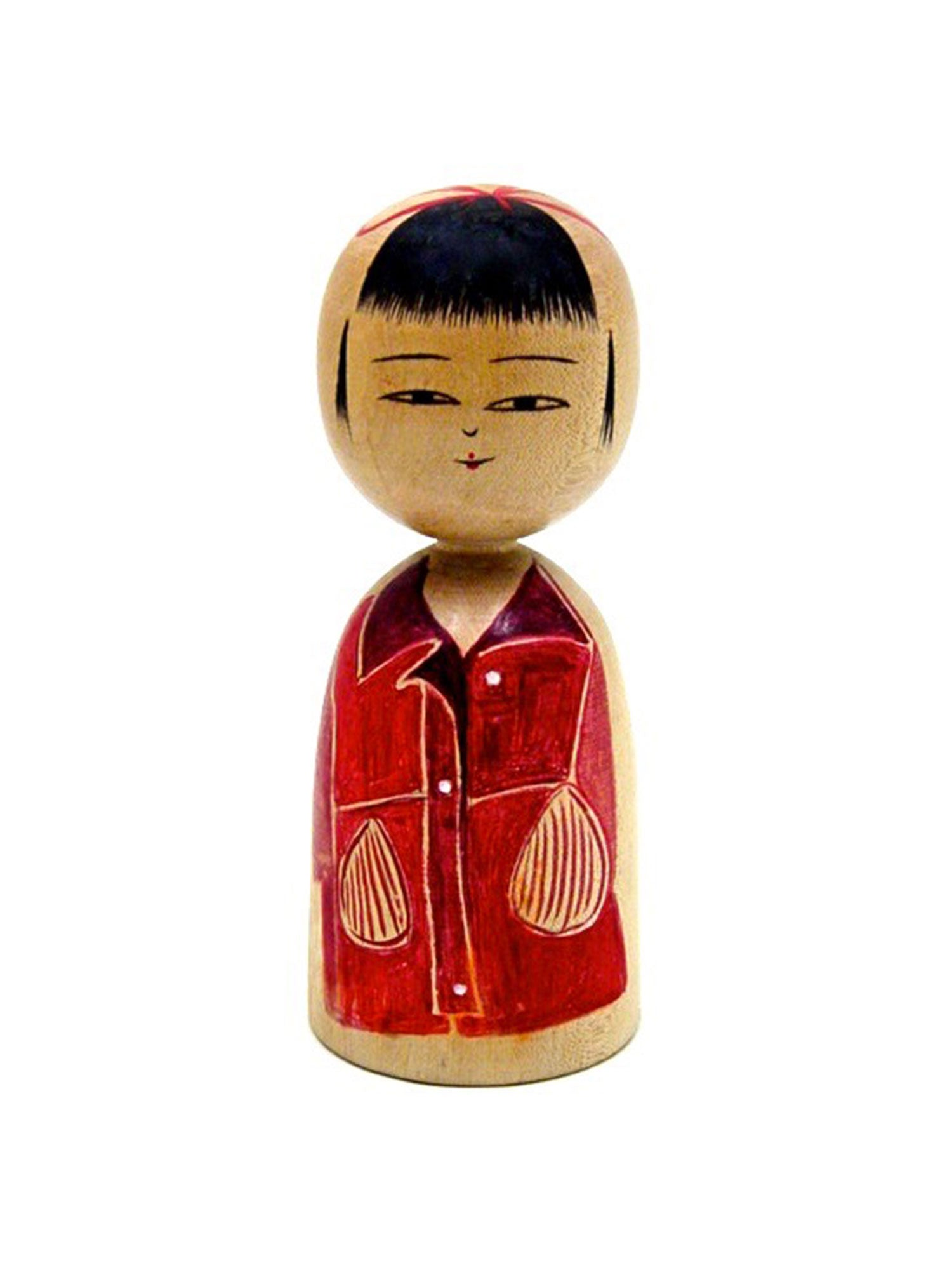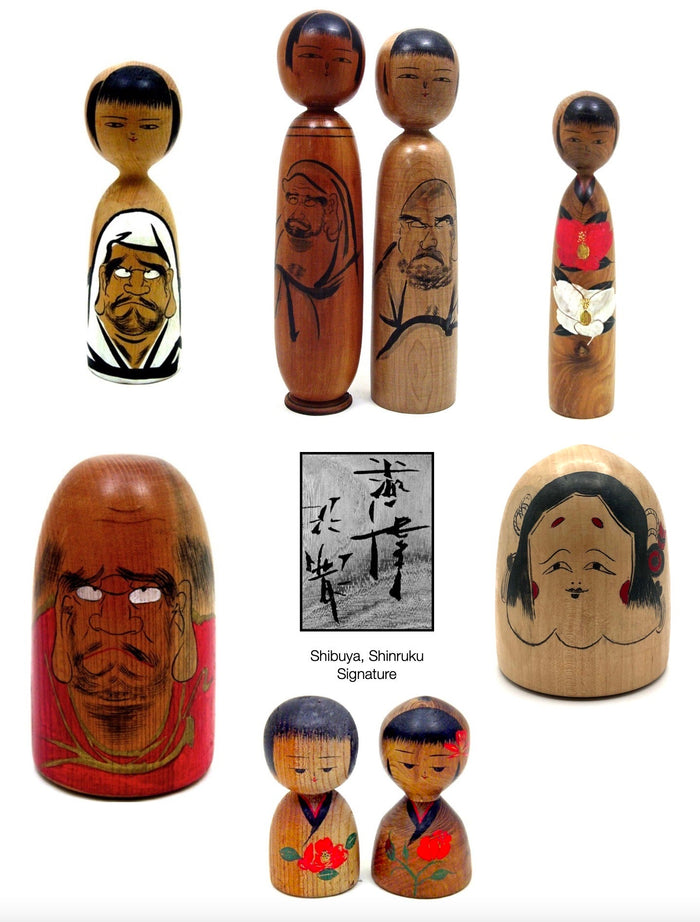
“Gakusei-fuku | School Uniform”
Dimensions: 7-1/2” h
Descriptive Qualities: This Sosaku Kokeshi represents a young child, forewhich the drawing on the body of the doll representing a child’s uniform. As with most Kijiyama-style dolls, the hair is traditionally detailed with a hair bow on top. The wearing of certain colors, or the use of particular colors, indicate beliefs, as related to schools and institutions. At various times, the Shogunate issued dictates on which colors could be used by different social classes, institutions, and organizations on particular and everyday occasions. This was done in order to limit ostentatious display in everyday life, hence the development of the uniform. The piece is signed and stamped on the back.
Vintage Condition: “as is” with some scattered light wear or stain that does not affect the design, and retains the original craft/workmanship. Any discoloration, chipping/cracking, surface wear or structural damage noted.

Artisan
Woodworker: Shibuya, Shinraku
Biographical History:
Transitional artist Shibuya, Shinraku is from Yuzawa City, in Akita Prefecture. Virtually nothing is known about this artist, but it is clear that many of his dolls are in the traditional Kijiyama style, which originated in Yuzawa, Minase, and Inagawa cities. Shibuya-san’s dolls range from the bright and beautifully painted to the skillfully and minimally drawn designs. He is also a prolific artist of Daruma dolls. His work dates from the 1960s onward. There is little biographical data on Shinrak-san, but as collectors, we felt it was most important to represent all Sosaku Kokeshi artists, whether or not each artist has a written account of his/her life. We show the diversity of cultural values and the creative work produced by a multitude of artists.
In researching old writings through articles and books that remain, it is evident that the Kokeshi Craftsperson not only created beautiful forms as toys, but also kept alive cultural values, customs, and fashion through the extensive representations of Kokeshi dolls. The beauty is in the doll and not the signatures, for most masters never signed their dolls. Later they named the dolls, but only when Westerners insisted on signatures because they did not know the artists, so the carvers began to sign their works, for the carvers wanted to promote sales to make a living, during the seasons that did not provide an environment to continue their otherwise daily work.
Collector's note – descriptive qualities, standard characteristics & ornamentation styles:
At New Year’s, most Japanese individuals and corporations buy Daruma dolls and make a resolution for the New Year. The tradition began in the late 17th century as a relief measure for farmers who were suffering from famine.
There are many different styles of Daruma, as you will see by Shibuya’s creations, but there is one philosophy that all of his Daruma share, and that is the pursuit of beauty and artistry through simplicity. Noted is the fact that the images are placed on a large amount of background, which divides the surface and balances the design with space to appreciate the image. Often seen is the use of black and white paint to create the impression. Additionally, we see the celebration of seasonal succession incorporating Iris, Camellia flowers, with many having an emphasis on Bamboo. Artists working in the sumi-e’ style of painting achieve a suggestion of detail by using different intensities of ink and line work. Unpainted areas of the doll give form and volume. It is most interesting that Shibuya continues to use both traditional and creative elements to express his feelings about Japanese life and values.
Explore & Learn More about Woodworker: Shibuya, Shinraku